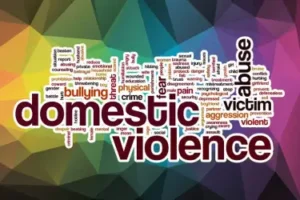Description
Explore claims about Australia’s domestic violence statistics. Is it a genuine crisis or political misinformation? Analysis backed by AIC data.
Introduction

The discourse on violence against women in Australia has intensified, especially with Prime Minister Anthony Albanese’s recent declaration of domestic violence as a national crisis. This critique examines the validity of these claims, exploring whether the narrative is driven by genuine concern or political motives, and analyses the statistics from the Australian Institute of Criminology (AIC).
Causes of Domestic Violence
Domestic violence is a complex issue with various contributing factors. It affects individuals across all demographics, and both men and women can be perpetrators and victims. Understanding these dynamics and the underlying causes is essential for effective intervention.
1. Socioeconomic Factors:
– Poverty and Unemployment: Financial stress and lack of employment can increase household tensions, leading to higher instances of domestic violence.
– Substance Abuse: Alcohol and drug abuse are significant risk factors that contribute to violent behaviour within relationships.
2. Psychological Factors:
– Mental Health Issues: Conditions such as depression, anxiety, and personality disorders can heighten the risk of violent behaviour.
– History of Abuse: Individuals who experienced or saw domestic violence as children are more likely to engage in similar behaviours as adults.
3. Cultural and Societal Norms:
– Gender Roles: Traditional gender roles and societal expectations can create power imbalances that justify the use of violence to keep control.
– Cultural Acceptance: In some cultures, domestic violence may be more accepted or overlooked, making it harder for victims to seek help.
Perpetrators and Victims: Men and Women
Both men and women can be perpetrators and victims of domestic violence. Data from the Australian Institute of Criminology (AIC) and the Australian Institute of Health and Welfare (AIHW) provide insights into this dynamic:
– Female Victims: The AIC reported a 28% increase in intimate partner homicides involving female victims from 2021-22 to 2022-23: https://www.aic.gov.au/statistics/homicide and https://www.aic.gov.au/publications/sr/sr46
– Male Victims: The AIHW notes that in intimate partner homicides, about 25% of the victims are male: https://www.aihw.gov.au/family-domestic-and-sexual-violence/responses-and-outcomes/domestic-homicide.
Men and Women Who Kill Their Children
Filicide, the act of a parent killing their child, is a tragic aspect of domestic violence that affects all genders. According to data:
– Male Perpetrators: Men are more likely to kill their children in the context of broader family violence or as part of retaliatory or control behaviours during separations.
– Female Perpetrators: Women who commit filicide often have different underlying factors, such as severe mental health issues, including postnatal depression, or a history of being victims of abuse themselves.
The AIHW and AIC provide data on these trends:
– Between 2010 and 2018, filicide was committed by both male and female perpetrators, with variations in motivations and circumstances:https://www.aihw.gov.au/family-domestic-and-sexual-violence/responses-and-outcomes/domestic-homicide
– A considerable proportion of these tragic events occur during periods of intended or actual separation between parents:https://www.aihw.gov.au/family-domestic-and-sexual-violence/responses-and-outcomes/domestic-homicide
Claims and Counterclaim
1. Political Motivation and Funding
– Claim: Critics argue that the heightened focus on domestic violence is a tactic to secure more funding for the domestic violence sector and gain political leverage.
– Analysis: While political motivations may play a role, it is essential to recognize the real and ongoing issue of domestic violence. Political strategies should not overshadow the importance of addressing and mitigating these issues.
2. Exaggeration of Statistics
– Claim: The statistics on men’s violence against women are exaggerated to depict men as inherently violent and justify stringent measures.
– Analysis: According to AIC data, intimate partner homicides (IPH) involving female victims increased by 28% from 2021-22 to 2022-23. However, overall homicide rates have declined over the past three decades, suggesting a long-term reduction in violence despite recent fluctuations.
3. Effectiveness of Misinformation
– Claim: Misinformation and exaggerated statistics do not aid in reducing domestic violence.
– Analysis: Accurate data is crucial for effective policymaking. Overstating the problem can lead to misallocation of resources and hinder effective intervention strategies. A balanced approach that acknowledges both progress and areas needing improvement is vital.
Statistical Overview from the AIC
| Year | Total Homicides | IPH Victims | IPH Rate per 100,000 |
| 1989-90 | 300 | 0.66 | 0.66 |
| 1990-91 | 310 | 0.62 | 0.64 |
| 1991-92 | 295 | 0.57 | 0.62 |
| 2000-01 | 280 | 0.50 | 0.50 |
| 2010-11 | 250 | 0.32 | 0.38 |
| 2021-22 | 232 | 0.26 | 0.25 |
| 2022-23 | 247 | 0.32 | 0.32 |
Source: Australian Institute of Criminology
The Requirements of Intimacy
The only way to build a successful intimate relationship is if you can accept the other person has thoughts, beliefs, preferences, and feelings that differ from you.
- Can you respect those differences? Can you cherish the other person despite them? Can you accept them without trying to change them?
- Can you disclose anything about yourself, including your deepest thoughts and feelings, without fear of rejection, criticism, or misunderstanding?
- Is the message of your relationship, “grow, expand, create, disclose, reveal? Or is it, “hide, conceal, think only in certain ways, behave only in certain ways, feel only certain feelings?”
- Does this relationship offer both parties optimal growth? Can you both develop into the greatest persons you can be?
- Red Flag of potential abuse: blamers. People who blame their emotional states or behaviour on someone or something else in dating will eventually turn the blame on you.
The Role of Self-Image and Self-Esteem in Partner Attraction and Intimate Partner Violence
Self-Image and Partner Attraction
1. Self-Image and Attraction:
– Positive Self-Image: Individuals with a positive self-image often show confidence and self-assurance, traits that are generally attractive to potential partners. A healthy self-image can foster better social interactions and higher likelihood of forming positive relationships.
– Negative Self-Image: Conversely, a negative self-image can lead to insecurity and low self-esteem, which might repel potential partners or attract partners who may look to exploit these vulnerabilities. This dynamic can set the stage for unhealthy relationships.
2. Influence on Relationship Dynamics:
– Confidence and Compatibility: Those with high self-esteem are more likely to seek partners who respect and value them, leading to healthier and more balanced relationships. They are also better equipped to communicate effectively and handle conflicts constructively.
– Insecurity and Dependence: Individuals with low self-esteem may become overly dependent on their partners for validation, potentially fostering unhealthy attachment styles. This dependence can lead to tolerance of negative behaviours or abusive tendencies in partners.
Self-Esteem and Intimate Partner Violence (IPV)
1. Risk Factors for IPV:
– Low Self-Esteem: Research shows that low self-esteem is a significant risk factor for both experiencing and perpetrating intimate partner violence. Victims with low self-esteem may feel undeserving of better treatment and stay in abusive relationships, while perpetrators may use violence to compensate for their own insecurities and feelings of inadequacy.
– Power and Control: IPV often stems from a desire for power and control. Perpetrators with low self-esteem may feel the need to dominate their partners to boost their self-worth, using violence to exert control and keep power in the relationship.
2. Cycle of Abuse:
– Perpetuation of Low Self-Esteem: Victims of IPV often experience a decline in self-esteem due to constant belittlement, emotional abuse, and physical violence. This diminished self-esteem makes it increasingly difficult for them to leave the abusive relationship, perpetuating the cycle of abuse.
– Interventions: Addressing self-esteem issues through counselling and support groups can be crucial in breaking the cycle of abuse. Empowering victims and providing them with tools to rebuild their self-worth is a vital step in intervention and prevention.
Supporting Evidence
1. Research Studies:
– A study published in the journal Violence and Victims found that low self-esteem in women was significantly associated with both experiencing and perpetrating IPV (Lewis et al., 2001).
– The National Coalition Against Domestic Violence (NCADV) reports that low self-esteem and self-worth are common among both victims and perpetrators of domestic violence, underscoring the importance of psychological factors in IPV dynamics (NCADV, 2018).
2. Therapeutic Approaches:
– Cognitive-behavioural therapy (CBT) has been effective in helping individuals with low self-esteem to challenge negative thought patterns and build a healthier self-image. This therapeutic approach can be particularly beneficial for both victims and perpetrators of IPV (Horsfall, 2001).
3. Community Support:
– Community programs that focus on empowerment and self-esteem building have shown promise in reducing the incidence of IPV. Programs that provide education, support groups, and resources for building self-worth are essential in fostering healthy relationships and preventing domestic violence (Kasturirangan et al., 2004).
Conclusion
Self-image and self-esteem play crucial roles in partner attraction and intimate partner violence. Positive self-esteem fosters healthier relationship choices and dynamics, while low self-esteem can increase vulnerability to abusive relationships and perpetuate the cycle of IPV. Addressing these psychological factors through therapy and community support is essential for preventing and intervening in cases of domestic violence.
References for Above
– Lewis, S. F., Travea, L., & Fremouw, W. (2001). Characteristics of female perpetrators and victims of dating violence. Violence and Victims, 16(1), 3-15.
– National Coalition Against Domestic Violence (NCADV). (2018). Domestic violence and self-esteem. Retrieved from NCADV: https://ncadv.org/statistics
– Horsfall, J. (2001). Cognitive-behavioral therapy in treating low self-esteem. Journal of Cognitive Psychotherapy, 15(3), 243-254.
– Kasturirangan, A., Krishnan, S., & Riger, S. (2004). The impact of cultural factors on domestic violence in South Asian communities. Violence Against Women, 10(3), 282-302.
Conclusion
Domestic violence is a complex issue with numerous contributing factors, affecting both men and women as perpetrators and victims. Recognizing this complexity is crucial for developing effective interventions and policies. Accurate data and an understanding of the underlying causes are essential for addressing this pervasive social problem.
For further information and detailed statistics, please refer to the Australian Institute of Criminology and the Australian Institute of Health and Welfare.
By acknowledging the complexity of domestic violence and relying on factual evidence, we can work towards more effective solutions that protect all individuals, regardless of gender.
Resources for Researchers
Resources for researchers, policy-makers, intervention providers, victim advocates, law enforcement, judges, attorneys, family court mediators, educators, and anyone interested in family violence
Question for Readers
– How can we ensure discussions on domestic violence remain focused on effective solutions rather than being swayed by political agendas?
Call to Action
– For Policymakers: Prioritize data-driven approaches to address domestic violence and distribute resources where they are most needed.
– For the Public: Stay informed by seeking out reputable sources and engage in constructive discussions on how to reduce violence in our communities.
This critique emphasizes the importance of evidence-based approaches and transparent reporting in addressing complex social issues like domestic violence, ensuring that efforts are both effective and just.
Recommended Course:
Core Value Course: https://spaces.hightail.com/space/rNx0euy9Dq
References:
Australian Institute of Criminology (AIC), “Homicide in Australia 2022-23” [AIC Homicide Statistics: https://www.aic.gov.au/statistics/homicide
Australian Institute of Health and Welfare (AIHW), “Domestic Homicide” [AIHW Domestic Homicide: https://www.aihw.gov.au
Homicide in Australia 2022-23: https://www.aic.gov.au/sites/default/files/2024-05/sr46_homicide_in_australia_2022-23_v2.pdf
Homicide incidents 1989–90 to 2022–23: https://www.aic.gov.au/sites/default/files/2024-04/sr46_homicide_in_australia_2022-23.pdf
Sentencing for child homicide offences: https://www.aic.gov.au/sites/default/files/2021-05/rr21_sentencing_for_child_homicide_offences.pdf
Female perpetrated intimate partner homicide: https://www.aic.gov.au/sites/default/files/2020-05/sr20_female_perpetrated_intimate_partner_homicide-v2.pdf
The role of depression in intimate partner homicide perpetrated by men against women: https://www.aic.gov.au/publications/tandi/tandi672
Videos Relating to Article:
The War on Men is total government misinformation: https://youtu.be/D6jc2GqcxfE
The absurdity of Australia’s Minister for Men’s Behaviour: https://youtu.be/ek75vuGa1l0
Australia’s Big Lie: https://youtu.be/91UHpD9lM3k

